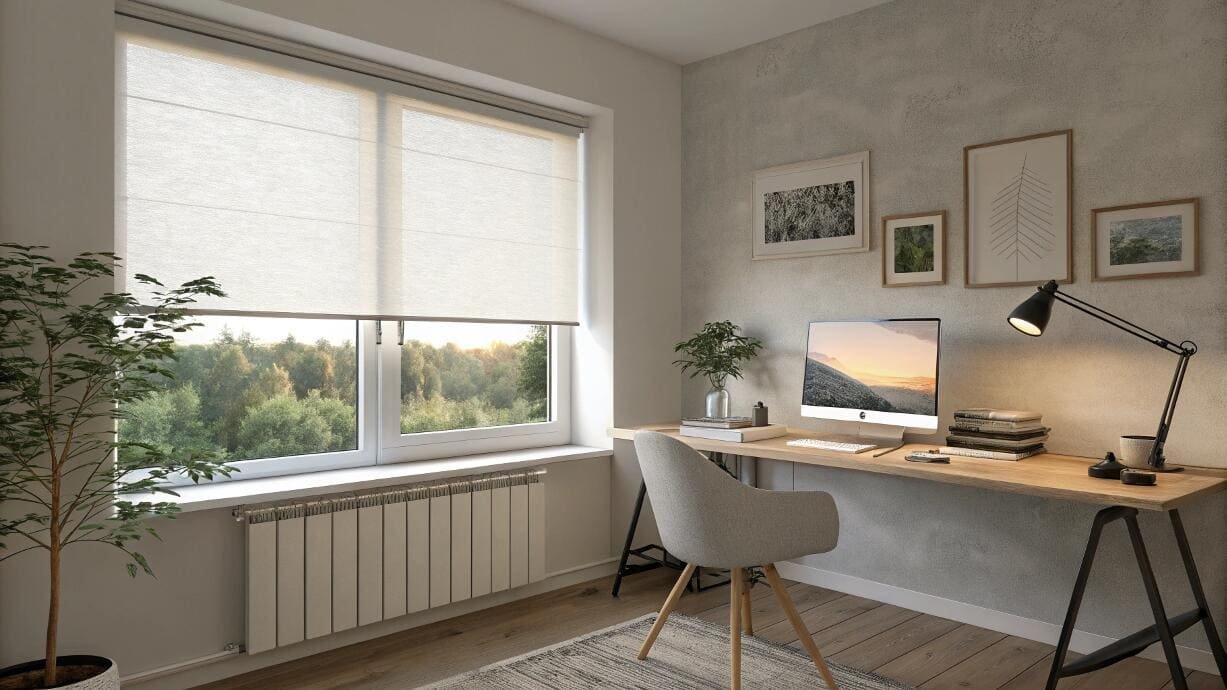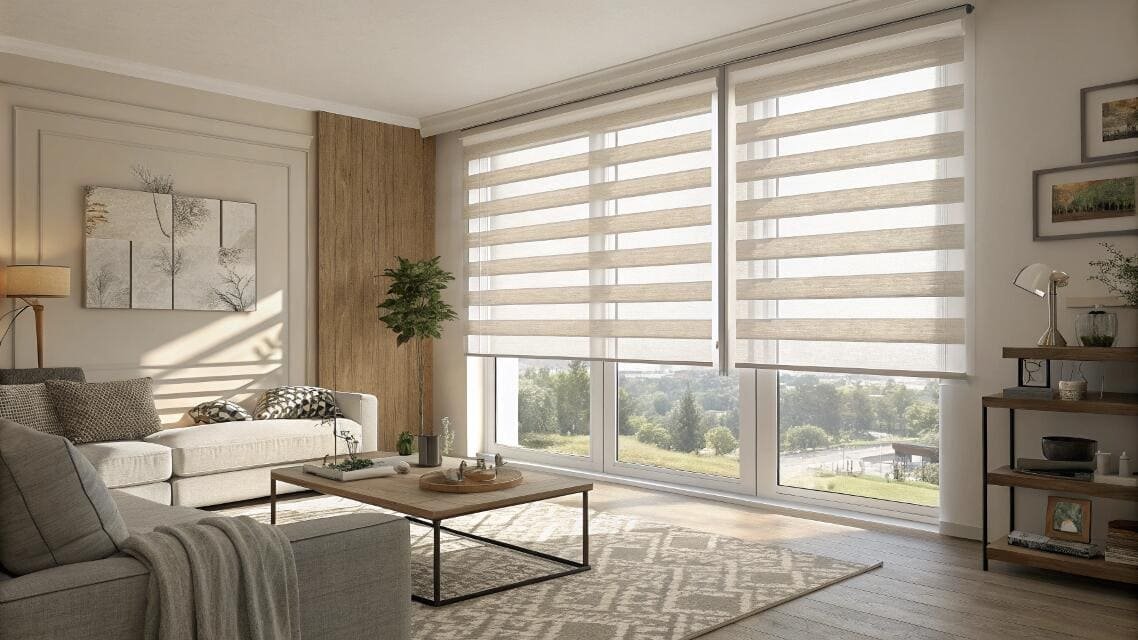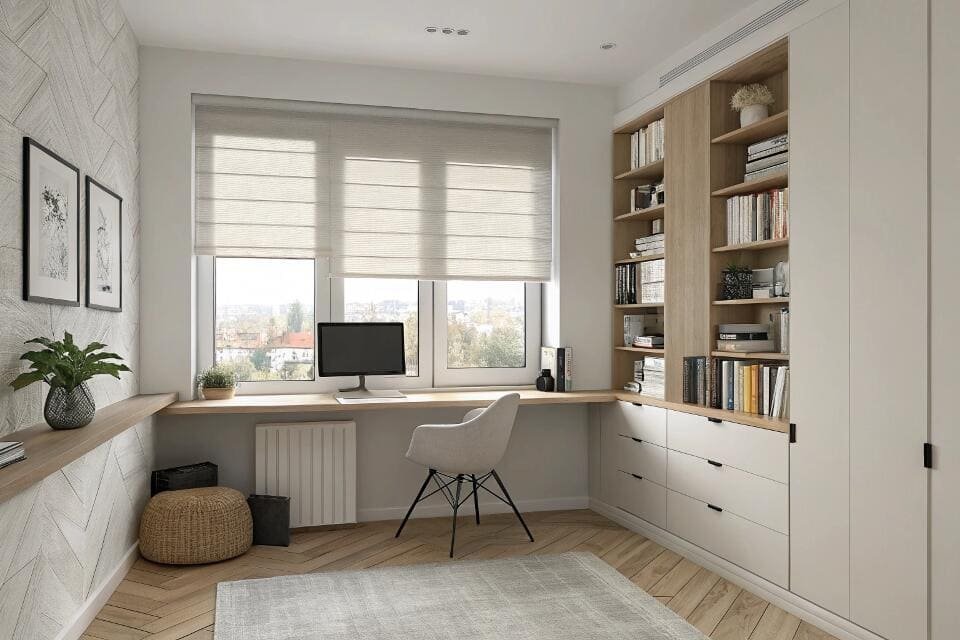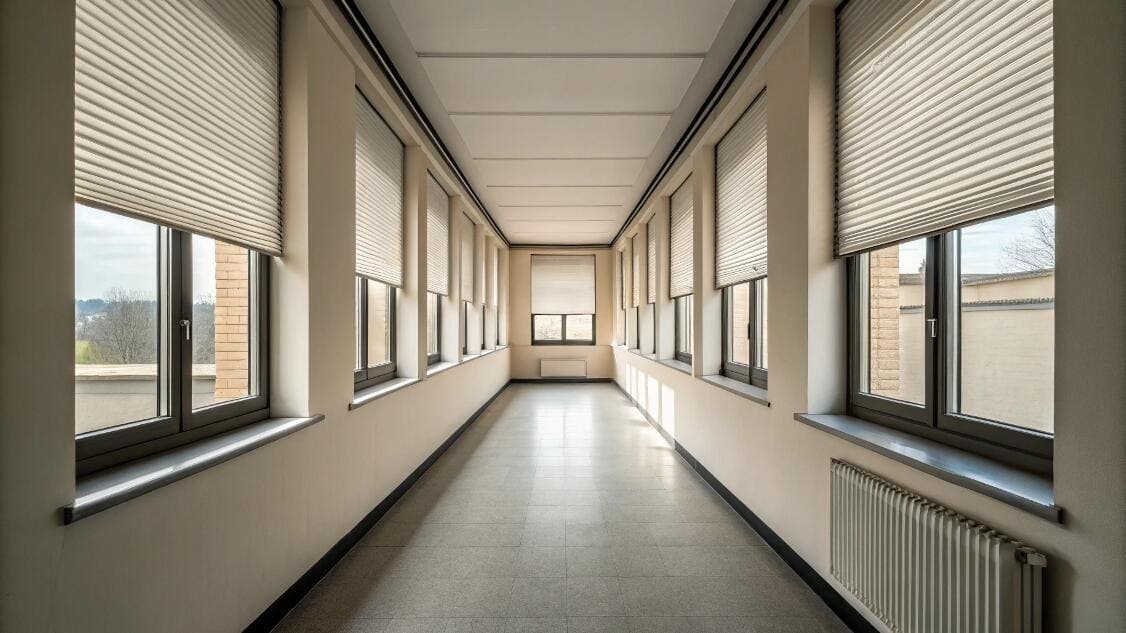Are your project's window blinds acting up, causing headaches and unexpected delays? Dealing with common blind issues can be frustrating, impacting both aesthetics and functionality. But don't worry, many problems have straightforward solutions.
Most common window blind problems often stem from wear and tear on internal mechanisms like cords, clutches, or gears, or from improper installation and maintenance practices. Addressing these requires understanding the specific component failure and applying targeted fixes, such as re-threading cords, adjusting tension, or replacing worn parts, to restore full functionality and appearance.

I have seen countless blinds in my career, from simple roller shades to complex motorized systems. Over time, even the best blinds can show wear. Knowing how to diagnose and fix these common problems saves time and money, ensuring your projects remain on schedule and within budget.
Why are my blinds not working properly?
Is it frustrating when blinds don't operate as they should, impacting light control and privacy? Many issues, from simple dust accumulation to more complex mechanical wear, can prevent blinds from functioning smoothly. Ignoring these small signs can lead to bigger repairs down the line.
Your blinds might not be working properly due to several common issues, including frayed lift cords, jammed cord locks[^1], worn internal gears or clutches, dust buildup[^2] hindering movement, or even improper installation causing misalignment. Identifying the specific symptom can help pinpoint the underlying cause and determine the right fix.

Dive deeper into blind malfunction diagnostics:
When blinds fail, it often impacts a project's timeline and budget. I often advise my clients, especially project buyers like Emma, to understand the root causes. Mechanical failures lead to operational issues. For instance, a worn clutch in a roller blind means it won't hold its position. In a Venetian or vertical blind, a broken tilt mechanism prevents slat adjustment. From a project management view, this means a potential re-order or professional repair, incurring costs and delays. Installation problems, on the other time, can appear quickly. If the blind brackets are not level or aligned, the blind will struggle to operate smoothly from day one, leading to uneven lifting[^3] or tilting. Environmental factors also play a part. Dust and debris can clog mechanisms over time, especially in high-traffic or dusty environments such as construction sites. Humidity changes can cause materials to expand or contract, impacting tension and movement. Recognizing the specific malfunction — whether it's a sticking cord lock, a grinding sound from a motor, or an uneven rise—is step one. This diagnostic analysis allows project managers to quickly assess if a simple on-site adjustment or cleaning is enough, or if a more significant part replacement or professional service is needed. This helps make accurate decisions about warranty claims or future procurement.
How to fix a window blind that won't go up?
Are you struggling with a blind that refuses to ascend, leaving your window permanently covered? This common issue can disrupt natural light and make a room feel enclosed, but often, the solution is simpler than you might think.
To fix a window blind that won't go up, first check if the cord lock is engaged or jammed; often, a firm tug down and then up on the cord can release it. If not, inspect the lift cords[^4] for tangles or fraying within the headrail, as these can impede movement and require straightening or replacement.

Dive deeper into fixing unmovable blinds:
A blind refusing to go up is typically a mechanical failure, specifically related to the lift system. For project buyers, this means considering durability and ease of repair. The primary culprit is often the cord lock mechanism. These small plastic or metal components grip the lift cords to hold the blind in place. Over millions of cycles, they wear out or get jammed by dust. A quick fix involves a sharp, downward tug on the lift cord, followed by an immediate pull up. This can sometimes reset a sticky lock. If that fails, the issue could be with the lift cords themselves. Frayed cords create friction, preventing smooth travel through the blind's internal channels or the cord lock. For motorized blinds, if "won't go up" means it's unresponsive, check the power supply, battery life, or obstructions in the motor's path. From a project specification perspective, choosing blinds with high-quality, durable cord locks and strong, braided lift cords, like those made from polyester or nylon, minimizes these issues. For example, some manufacturers offer heavy-duty cord locks designed for commercial use, which are more resistant to wear. My factory partners often detail the materials used for such critical components. When planning large-scale installations, opting for systems that allow for easy access to the headrail for maintenance or part replacement can significantly cut down on future service costs and disruption.
How do you fix blind strings to open and close?
Does your blind string refuse to cooperate, making it impossible to control light and privacy? If your blind strings are not effectively opening or closing your blinds, it typically points to issues with tension or internal cord pathways[^5].
To fix blind strings for opening and closing, first check for proper tension, as loose cords can't effectively raise or lower slats. Next, inspect the cord guide and pulley system within the headrail for tangles or obstructions, ensuring the cords run freely without friction.

Dive deeper into repairing blind strings:
Repairing blind strings is a common mechanical failure. This often involves the cord system or the tilting mechanism. For Venetian and vertical blinds, the string (or wand) controls the tilt. If the strings are not opening and closing the slats properly, you might have an issue with the internal gear mechanism or the cord drum inside the headrail. Over time, these small plastic gears can strip or crack due to constant use, especially if users force them. Another common issue is that the strings themselves become stretched, frayed, or disconnected from the tilt mechanism. This leads to uneven slat rotation or no movement at all. When specifying blinds for a project, consider the type of material used for the lift cords – durable, UV-resistant polyester cords are preferred over cotton, which can degrade faster. For projects that anticipate heavy use, opting for continuous cord loop mechanisms instead of standard cord locks can reduce wear on the cord system as the length of the operating cord never changes. Also, evaluate the quality of the internal components. For example, some manufacturers use brass or steel gears in their tilting mechanisms, which offer superior durability compared to plastic. When I review product specifications, I always look for detailed component breakdowns, ensuring critical parts like cord gears and drums are robust enough for commercial applications, reducing the frequency of such mechanical failures over the blind's lifecycle. This proactive selection is key to minimizing long-term total cost of ownership.
How to fix blinds that are clicking and not opening?
Are your blinds making a frustrating clicking noise but failing to open or close? This distinct sound often signals a specific mechanical problem, primarily within the headrail's operating mechanism.
If your blinds are clicking but not opening or closing, it usually indicates a stripped or broken gear within the clutch or motor mechanism in the headrail. The clicking noise is the sound of the gear teeth slipping. Repair typically involves disassembling the headrail to replace the faulty clutch or motor assembly.

Dive deeper into fixing clicking blinds:
The "clicking but not opening" symptom points directly to a mechanical failure in the operating system, often within the clutch mechanism of manual blinds or the gears of a motorized blind. For project buyers, this is a critical issue that compromises automation and functionality. In manual blinds, continuous cord loop systems rely on a clutch to hold the blind in position and facilitate movement. If the internal spring or gears within this clutch wear out due to repeated stress or poor manufacturing, they will slip, producing the clicking sound without engaging the roller tube. This often happens in high-traffic areas or where users apply excessive force. For motorized blinds, the clicking sound suggests worn-out gears within the motor itself. These precision gears, often plastic in entry-level models, can strip under heavy loads or after extended use. When sourcing, I look for models with robust clutch designs, sometimes featuring metal gears or self-lubricating materials, which offer a significantly longer operational lifespan. For motorized options, I prioritize motors with higher torque ratings than strictly necessary, as this reduces strain on the gears, and often, with a reputable brand warranty for motors (e.g., 5-7 years). Project managers should also consider the ease of replacing these components. A modular design where the clutch or motor can be swapped out quickly without removing the entire headrail is beneficial for minimizing downtime and labor costs during maintenance cycles. This focus on component quality and repairability is crucial for commercial projects where uptime and long-term costs are paramount.
How to unstick a window blind?
Is your window blind refusing to move smoothly, getting stuck mid-operation? A sticky blind can be incredibly frustrating, hindering proper light control and making your windows look untidy.
To unstick a window blind, first check for obstructions in the window frame or along the blind's path, such as furniture or debris. Then, inspect the slats or fabric for misalignment or damage that might be causing friction. For roller blinds, ensure the fabric is rolling evenly on the tube, and for horizontal blinds, lubricate the cord channels if they are stiff.

Dive deeper into unsticking window blinds:
A sticky blind often indicates an operational failure or installation issue rather than a catastrophic mechanical breakdown. Project buyers need to consider how environmental factors and user interaction affect blind longevity. For horizontal blinds (like Venetian or wood blinds), sticking can occur if slats are bent, warped (due to humidity or temperature changes), or if the lift cords are binding. Excessive dust and grime can accumulate in the cord channels, increasing friction. A practical solution involves cleaning the slats and headrail thoroughly, and for stubborn cords, applying a silicone-based spray lubricant (avoid oil-based lubricants, which attract more dust). For roller or zebra blinds, the fabric might be rolling unevenly, causing it to rub against the brackets or inner headrail. This is often an installation issue—if the blind is not perfectly level, or if the fabric was not trimmed squarely. My advice includes checking the level of the headrail and, if possible, adjusting brackets. Some tube motors have a limit switch setting that controls travel; if set incorrectly, they might "stick" at the top or bottom as they hit a physical barrier too early or too forcefully. Consider the environment of the project; blinds in kitchens, workshops, or high-humidity areas will accumulate grime faster and require more frequent cleaning or specification of moisture-resistant materials. Procurement managers should inquire about the manufacturer's recommendations for cleaning and lubrication, and choose products with robust materials and precise manufacturing tolerances to minimize friction points. Focusing on ease of cleaning and material resilience during product selection can prevent many sticky situations post-installation.
Why does one side of my blinds go down?
Are you noticing that one side of your blinds sags or refuses to go up evenly with the other? This common problem creates unsightly gaps and signals an issue with the lifting mechanism on that particular side.
If one side of your blinds goes down, it most likely indicates a problem with a single lift cord or its attachment point within the headrail. This could be a broken, frayed, or dislodged cord, or a malfunction in the individual cord drum or spool on that side, preventing uniform tension and movement.

Dive deeper into uneven blind operation:
When one side of a blind sags, it's a clear operational failure stemming from a mechanical issue within the lift system tailored to horizontal or Roman blinds. For project managers, this points to product longevity and the performance of internal components. The problem nearly always lies with either a frayed or broken lift cord or a malfunctioning cord drum/spool located inside the headrail that controls that specific section of the blind. High-quality blinds use multiple lift cords to distribute tension evenly across the width of the fabric or slats. If one cord breaks or slips out of its retainer, the weight it was supporting shifts, causing that side to drop. This often happens due to continuous friction in the cord channels or wear and tear on the cord itself. Less common but equally disruptive is a damaged cord lock or drum on one side that no longer maintains tension. When selecting blinds, it’s crucial to assess the quality of the internal lift mechanisms. Look for robust, self-locking cord drums (for Roman blinds) or durable cord ladders (for horizontal blinds) that are less prone to stretching or breaking. Manufacturers like VelaBlinds emphasize the internal component quality for long-term performance. For large commercial installations, the failure rate of such components directly impacts maintenance budgets. I recommend considering blinds designed for easy access to the headrail components, allowing for quicker cord replacement or re-threading, rather than requiring full blind replacement. This can often be specified by requesting heavy-duty internal mechanisms or a specific type of lift cord material (e.g., woven polyester with a high breaking strength) to prolong the life of the installation and uphold client satisfaction.
How to fix misaligned and uneven blinds?
Does your window look sloppy because the blinds are crooked or uneven? Misaligned slats or an entire blind that hangs askew can detract from a room’s appearance and compromise privacy.
To fix misaligned and uneven blinds, first ensure the installation brackets are perfectly level; minor adjustments can often correct the tilt. Then, for horizontal blinds, manually adjust individual slats to realign them, or for Roman and cellular blinds, check and re-thread lift cords if they have slipped from their channels.

Dive deeper into fixing misaligned blinds:
Misaligned and uneven blinds are a combination of installation issues and light mechanical wear. This directly impacts the aesthetic appeal and functionality of a project. For designers and contractors like Emma, presenting perfectly aligned window treatments is essential. The most common cause is improper initial installation, where the headrail is not perfectly level. Even a slight tilt can cause the blind to operate unevenly, leading to one side sagging lower than the other. Project buyers should insist on precise installation guidelines and potentially, a post-installation checklist to ensure proper leveling. Another cause, particularly for horizontal slat blinds (like Venetian or wood blinds), is uneven wear or breakage of the lift cords or cord ladders. If one section of the ladder breaks, slats in that area will drop out of sync. Fixing this often involves untangling or re-threading lift cords. For Roman or cellular blinds, uneven lifting can result from the lift cords slipping out of their routing rings or channels within the fabric. This is preventable by choosing blinds with securely sewn-in rings or robust internal routing systems. I often check specifications for the robustness of these minor components. When considering procurement, prioritize manufacturers who offer clearly marked installation points and provide detailed, easy-to-follow instructions. For large-scale projects, I recommend purchasing a few extra blinds, or spare parts, especially common wear items like cord locks or ladder cords, to facilitate quick on-site repairs and avoid delays due to misaligned or uneven operation. This approach significantly reduces the long-term maintenance burden and ensures visual consistency.
What are the most common blind mechanisms that break?
Are you wondering which components of window blinds are most prone to failure, impacting functionality and durability? Knowing the weakest links can help you choose more resilient solutions for your projects.
The most common blind mechanisms that break include lift cords due to friction and fraying, plastic cord locks that wear out or jam, internal clutches in roller blinds that slip, and small gears within tilting mechanisms or motors that strip. These components experience the most stress during regular operation.

Dive deeper into common component failures:
Understanding which blind mechanisms commonly fail is critical for a project buyer's procurement strategy and risk assessment. I categorize these as high-wear mechanical components.
- Lift Cords: These are arguably the most frequent failure point, especially in corded blinds. Constant friction as they pass through guide holes and cord locks, coupled with UV exposure, causes them to fray and eventually snap. In a commercial setting, where blinds are operated multiple times daily, their lifespan is even shorter. My recommendation to Emma is to specify blinds with durable, braided polyester cords and to ensure cord channels are smooth to minimize friction.
- Cord Locks: Found in traditional corded blinds, these small devices hold the blind at the desired height. They typically use a spring-loaded mechanism or internal teeth. Over time, these can wear down, become clogged with dust, or simply lose their gripping ability, preventing the blind from staying up. High-quality cord locks are often made from more robust materials and have a simpler, more reliable design.
- Clutch Mechanisms (Roller/Zebra Blinds): For continuous cord loop roller and zebra blinds, the clutch is what enables smooth raising and lowering, and holds the blind in position. Cheap clutches often have plastic gears that strip quickly under stress. A clear sign of failure is the "clicking" sound without movement. Investing in blinds with metal core clutches or those made from high-grade, reinforced plastics is essential for longevity in high-frequency use environments.
- Tilting Mechanisms (Venetian/Vertical Blinds): These intricate assemblies, often operated by a wand or cord, control the angle of the slats. They contain small gears that can strip or break, especially if forced. For residential projects, this might be less critical, but in offices or public spaces, these see constant adjustment. Some manufacturers offer tilt mechanisms with built-in overload protection.
- Motorized Components: While generally durable, motors can fail. Common issues include battery degradation (for battery-powered), faulty wiring, or stripped internal gears (as mentioned before for "clicking"). Selecting reputable motor brands, ensuring proper power supply, and adhering to load limits are crucial. For project buyers, a reliable motor warranty (typically 5-7 years) is a non-negotiable.
Here is a table summarizing these points for easy reference:
| Mechanism Type | Symptom of Failure | Root Cause | Project Impact | Procurement Solution |
|---|---|---|---|---|
| Lift Cords | Fraying, snapping | Friction, UV exposure | Uneven operation, blind won't raise | High-strength polyester/nylon cords, smooth channels |
| Cord Locks | Blind won't hold | Wear, dust, poor material | Blind drops, safety hazard | Durable, robust designs, self-locking features |
| Clutch Mechanisms | Clicking, slipping | Stripped plastic gears | Blind won't move/hold, noisy | Metal core or high-grade reinforced plastic clutches |
| Tilting Mechanisms | Slats won't angle | Stripped gears, forced operation | Privacy/light control compromised | Reinforced gears, overload protection |
| Smart Motors | Unresponsive, clicking | Battery, wiring, stripped internal gears | Automation failure, costly repair | Reputable motor brands, extended warranties, proper power infrastructure, correct sizing |
By understanding these points, project buyers can focus on high-quality components during selection, significantly reducing the likelihood of common blind problems and extending the lifespan of the installations. This proactive approach minimizes future maintenance costs and client dissatisfaction.
Conclusion
Facing common window blind issues can disrupt any project, but understanding their root causes—from mechanical wear to installation errors—allows for effective fixes. By focusing on quality components and proper maintenance, you can ensure your smart shading solutions operate flawlessly for years.
Optimize Your Project's Shading Solutions.
Ready to specify high-quality, durable smart blinds for your next project? Ensure long-term performance and minimize future maintenance by partnering with us. Contact our project solutions team today to discuss your requirements, request detailed spec sheets, or get a personalized quote for reliable, smart shading systems that last. Let's power your projects with smarter blinds, built to perform. Reach out at info@velablinds.com now.
Extended FAQ Section
How often do smart blinds need maintenance?
Smart blinds, while durable, benefit from periodic preventative maintenance to ensure optimal performance and longevity. Typically, a visual inspection and light cleaning every 6-12 months are sufficient to clear dust and check for any minor alignment issues. For the motorized components, battery-powered blinds require battery replacement every 1-3 years depending on usage. Hardwired systems need less frequent attention, perhaps an annual check of connections. I advise project managers to include a maintenance schedule in their client handbooks, recommending professional checks every 2-3 years, especially for high-traffic commercial installations. This proactive approach identifies potential mechanical failures early, such as worn gears or fraying cords, before they lead to complete operational failure, saving significantly on emergency repair costs and ensuring consistent functionality for end-users.
What is the lifespan of motorized blind components?
The lifespan of motorized blind components, particularly the motor itself, largely depends on the motor's quality, usage frequency, and environmental conditions. Reputable brands typically offer motors designed for 10,000 to 20,000 up/down cycles, translating to 5-10 years of life in residential use (2-4 cycles/day). For commercial applications with higher usage, this lifespan can reduce, which is why choosing heavy-duty commercial-grade motors is crucial. The internal gears, often plastic, are usually the first point of failure, typically from stripping due to overload or wear. Components like batteries, if rechargeable, may last 3-5 years before capacity noticeably degrades, while wired systems offer indefinite power supply. Project buyers should prioritize motors with a minimum 5-year warranty from the manufacturer, as this reflects confidence in product durability and minimizes the risk of early replacement costs in a large-scale deployment.
What are common installation mistakes for blinds?
Common installation mistakes for blinds can lead to immediate operational problems and compromise their longevity. The most frequent errors involve improper mounting, such as failing to ensure the headrail is perfectly level, leading to uneven lifting or sagging. Another mistake is using incorrect fasteners for the wall material, which can cause the blind to pull away from the wall over time, or overtightening screws, warping the headrail. Incorrect measurement, particularly in inside mounts, can result in friction between the blind and the window frame, leading to sticking or premature wear. I emphasize the importance of following manufacturer installation instructions precisely, using appropriate tools, and verifying levelness at multiple points. For commercial projects, allocating sufficient time for skilled installers and conducting a post-installation quality check for proper operation and alignment are essential steps to avoid costly call-backs and ensure client satisfaction.
---
[^1]: Understanding cord locks can help you troubleshoot issues with your blinds not lifting properly.
[^2]: Learn how to prevent dust buildup to maintain the functionality of your blinds.
[^3]: Understanding the causes of uneven lifting can help you maintain balanced blinds.
[^4]: Learn how lift cords work to ensure your blinds operate smoothly and efficiently.
[^5]: Learn about cord pathways to troubleshoot issues with blind operation.Partner with VelaBlinds for Your Next Project
Smart window treatments shouldn't be complicated. After working with 500+ distributors and contractors worldwide, I've streamlined the process to get you quality products, competitive pricing, and reliable support - every time.
Why project professionals choose VelaBlinds:
- ✅ Fast, Accurate Quotes - Detailed specs and pricing within 24 hours
- ✅ Transparent Pricing - No hidden fees, volume discounts clearly outlined
- ✅ Quality Assurance - Direct partnerships with certified OEM manufacturers
- ✅ Project Support - Dedicated account manager from quote to delivery
Start your next project:
📧 Quick Quote: Send your requirements to info@velablinds.com
📱 Direct Contact: WhatsApp +86 137 2012 8317
🌐 Browse Solutions: https://velablinds.com/
📁 Product Resources: Access spec sheets, catalogs & project files
Jimmy Chen, Founder
"I built VelaBlinds to solve the real challenges I faced as a project buyer - long lead times, unclear specs, and unreliable suppliers. Let's discuss how we can power your projects with smarter blinds."
Serving distributors and contractors across North America, Europe, and Australia since 2018.




